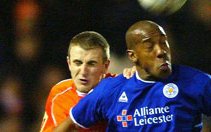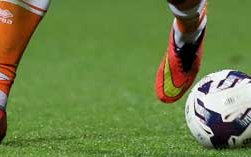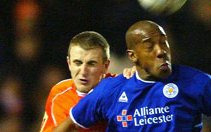SeasideEssexXile previews our trip to Burnley.
Turf Moor – Burnley
By SeasideEssexXile
It`s been exactly 51 weeks since our last visit to t`turd. On that wet Saturday evening in front of a watching nation we turned in an awful performance and woe was us. We followed it up 3 days later with a 5-0 thumping of Leeds, also away from home. The contrast between those displays has already been replicated this season. From when we once looked world beaters and topping the table to the last 3 games which has seen us score 1 whilst conceding 8, only abated by the international break.
Manager-less and with the worst defensive record in the division surely history can`t repeat itself.
How To Get There
M55, M6 South. Leave the M6 at Junction 29 and onto the M65. Leave the M65 at Junction 10 and follow signs for Towneley Hall. This road eventually goes past the ground. There is a car park at the cricket ground by Turf Moor which costs £6. There is also a private car park available on Doris Street, off Belverdere Road (BB11 3DL), which is around 400 yards from the ground – £5. Otherwise it`s, street parking.
For the Virgin lovers – there are two train stations that are in walking distance of Turf Moor, Burnley Central and Burnley Manchester Road. Central station is around a 20 minute walk away from the ground and is mostly served by local trains. Manchester Road is a 15 minute walk away and is served by the faster express service. Walking directions from both are as follows:
Manchester Road Station
Leave the station cross the main road towards the cinema. The ground should be clearly visible in the distance straight ahead. Turn left and progress down ‘Centenary Way’ which is a dual carriageway (A682) going downhill towards the ground. A few minutes walk down this road will bring you to a roundabout where you should turn right under the canal bridge into Yorkshire Street (A671). Continue down this road and you will reach the ground on your left, with the away stand the first to be reached.
Central Station
Walk out of the station and across the road down towards a small retail area including Fads and Halfords Cycles. You will reach the inner ring road (A679), where you turn left and after about 200 yards you will reach a set of traffic lights. Turn right at the lights into Church Street (A682). Continue down Church Street until you reach a large roundabout at which you turn left under the canal bridge into Yorkshire Street (A671). Continue down this road and you will reach the ground on your left, with the away stand the first to be reached.
Expect plod to be waiting for our arrival via the choo choo.
For the sat navvers amongst us – BB10 4BX
The Stadium
Sport was first played at the Turf Moor site in 1833, when Burnley Cricket Club was founded and made the ground their home. Horse racing also took place at the site in 1840.[In 1883, the cricket club invited Burnley Football Club, which had been formed in 1882, to move from their original home at Calder Vale to a football pitch adjacent to the cricket field. The first football match at Turf Moor took place on 17 February 1883, when Burnley were defeated 3-6 by Rawtenstall. For the first two years, spectators were forced to congregate around the pitch, so in 1885 the club built an 800-seater wooden grandstand along the Brunshaw Road side (the south side) of the ground and installed terracing for 5,000 people at the ends of the pitch. The following year, Turf Moor became the first senior football ground to be visited by a member of the British Royal Family when Prince Albert Victor saw Burnley defeated 3-4 by Bolton Wanderers on 13 October 1886, while visiting the town to open a new hospital.
Turf Moor hosted its first Football League match on 6 October 1888, when Burnley won 4-1 against Bolton Wanderers. In 1891 the Burnley Union Star Football Club disbanded, abandoning their Rakehead ground, which was complete with its own grandstand. Burnley bought the stand and moved it to Turf Moor. It became known as the ‘Star’ stand and was erected on the site of the current James Hargreaves Stand, on the north side of the ground. In March of the same year, Turf Moor hosted its first floodlit football match. Sixteen creosote-fuelled lamps were placed at regular intervals along the sides of the pitch, and spectators reported that while the edges of the field were sufficiently lit, there was a dark area in the centre.
On 26 March 1898, Turf Moor saw a crowd of over 20,000 for the first time for Burnley’s FA Cup Third Round tie against Everton. The ‘Star’ stand was demolished in 1898 and replaced by a new, larger stand, although it was still referred to as the ‘Stars’ stand. Five years later, a second tier was built on the Brunshaw Road stand to accommodate club offices. In March 1909 the ‘Star’ stand was extended, with new turnstiles and barricades erected in preparation for the FA Cup Quarter Final against reigning league champions Manchester United. In the spring of 1911, plans were unveiled for the rebuilding of the Brunshaw Road stand, with former Burnley forward Arthur Bell the architect for the project. A strike amongst railway workers delayed the deliveries of steelwork for the new roof but spectators were still able to use the stand in time for Burnley’s first home league game of the 1911-12 season. However, work on the dressing rooms had not been completed, and players from both teams were forced to change in the adjoining cricket pavilion. The newly erected Brunshaw Road stand cost the club £5,000 (£378,000 as of 2011) and could accommodate over 5,500 spectators, including 2,200 seated places, increasing the capacity of Turf Moor to just under 41,000.
In 1913 the Burnley directors decided to demolish the ‘Star’ stand for a second time, just 15 years after it had been rebuilt. In the same year, the Brunshaw Road stand was further extended to run the whole length of the pitch and in 1914 a roof was constructed to cover the terracing at the Cricket Field end, thus increasing the capacity of the ground to almost 50,000.] In 1922, Turf Moor hosted its only FA Cup Semi Final; a crowd of over 46,000 turned out to see Huddersfield Town achieve a 3-1 victory over Notts County. On 23 February 1924, a crowd of over 50,000 saw Burnley secure a 1-0 win over Huddersfield Town in the FA Cup Third Round. The attendance was later confirmed to be 54,775, which is still a record for Burnley. In 1927, Turf Moor hosted its only international fixture when England played Wales. England lost the match 2-1, with Burnley captain Jack Hill scoring an own goal to give Wales the win. In 1932, the Burnley Supporters’ Club raised funds to install a hut and scoreboard at the Bee Hole End of the ground. Six years later, plans were announced to build a new covered terrace on the site of the old ‘Stars’ stand, but these plans were delayed by the outbreak of the Second World War.
The plans came to fruition after the war, and the Longside was completed in 1954. The club spent £20,000 (£408,000 as of 2011) on the roof alone and the terrace was built using help from players in the Burnley youth team. Three years later, the club also installed permanent floodlights at Turf Moor. The lights were first used on 16 December 1957, when Burnley hosted rivals Blackburn Rovers in a friendly. On 16 November 1960, the stadium was the venue of Burnley’s first ever match in the European Cup. Jimmy Robson and Jimmy McIlroy both scored early in the first half as Burnley recorded a 2-0 victory over Stade de Reims. In 1969, a new, bigger stand was built at a cost of £180,000 (£2.21 million as of 2011) at the Cricket Field End that incorporated changing rooms and a players’ tunnel, which had previously been a part of the Brunshaw Road stand. Under-seat heating was installed in the Cricket Field End, but after the first time it was used, chairman Bob Lord deemed it uneconomical and expensive, and it was never again switched on.
Dedevelopment continued at Turf Moor and later in the 1960s, the Bee Hole End terrace was constructed. It had a capacity of over 7,000 and despite having no roof, it was very popular among supporters. In 1974, Bob Lord hired Cambridge Soil Services to relay the Turf Moor pitch, and the work also incorporated new drainage technology and under-soil heating. The pitch was raised and the slope that been ever-present since the club had arrived at Turf Moor was removed. He then replaced the Brunshaw Road Stand with a new all-seater stand named after himself, which was opened in 1974 by then-prime minister Edward Heath. The stand held 2,800 supporters, cost £480,000 (£3.73 million as of 2011) and contained the board room and a number of luxurious seats for Burnley’s and visiting clubs’ directors. In 1975, the floodlights that had been installed in 1957 were replaced.]
A tragedy occurred at the stadium in March 1992 when 17-year-old apprentice footballer Ben Lee was killed in a fall from the roof of the Longside Stand, when trying to retrieve a football.
Following the installation of the floodlights, Turf Moor did not undergo any further changes until the mid-1990s. After the Taylor Report had stated that all grounds must become all-seater stadia, the Longside’s and Bee Hole End’s days were numbered, and in December 1994 the club announced the redevelopment of the two standing areas. In 1995, Lincolnshire-based company Linpave were contracted to build two new stands at Turf Moor. In June 1995, Turf Moor hosted a match between England U21 and Latvia U21 in the qualifying campaign for the 1996 UEFA European Under-21 Football Championship. On 16 September 1995, the last ever match was played in front of the historic Longside when Burnley won 2-1 against Hull City in a Second Division fixture. The Longside, which had housed both home and away supporters, was subsequently demolished and the James Hargreaves Stand, for home fans only, was built in its place. The new stand opened on 23 April 1996 for the visit of Bristol Rovers. The following day, demolition of the Bee Hole End started, with work on the two stands finally completed in September 1996 at a total cost of £5.3 million (£7.42 million as of 2011), taking the capacity of the stadium to 22,619. The new stand was named the Jimmy McIlroy Stand, in honour of the former Burnley forward and Northern Ireland international.
Turf Moor saw its first international women’s match on 4 September 2003 when England achieved a 1-0 victory over Australia. Two years later, England U20 drew 2-2 with Netherlands U20, with former Burnley midfielder Richard Chaplow captaining the England side. On 25 May 2007, Turf Moor hosted a friendly international between England B and Albania. Although the game was not officially recognised as a full international, a number of England first-team players played in the game. In October 2007, a Barco video wall was installed in the Cricket Field End, which at the time accommodated visiting supporters. At the start of the 2009-10 season, a new PA system was installed and the big screen was moved to allow home fans to sit in the Cricket Field Stand for the club’s only season in the Premier League
Where To Drink
Limited to put it mildly. The cricket club takes half an hour to get served. I still recall fondly one midweek game 20 odd years ago and Essex Snr walking with me in to ‘The Turf’ and asked the lass behind the bar ‘What ale do you serve in here?’ cue the silence of the piano suddenly stopped being played.
Plod & Stewards
The old bill seemed to use this fixture as an exercise in selecting ‘faces` leaving the ground and rounding them up a couple of years ago. There`ll be a large plod presence, especially at the stations, ground and of course the obligatory escort to t`turf.
Fear Factor Rating – 5
Be wary once you leave the immediate are of the ground and the plod presence thins out.
SKY has seen us with a 100% record this season, and not in the right way. Winters coming weather wise, here`s hoping come just after 7pm that there`s a little bit of sunshine bringing us home from them there hills. Altogether now ‘yer mums yer…’
Onwards + Upwards



